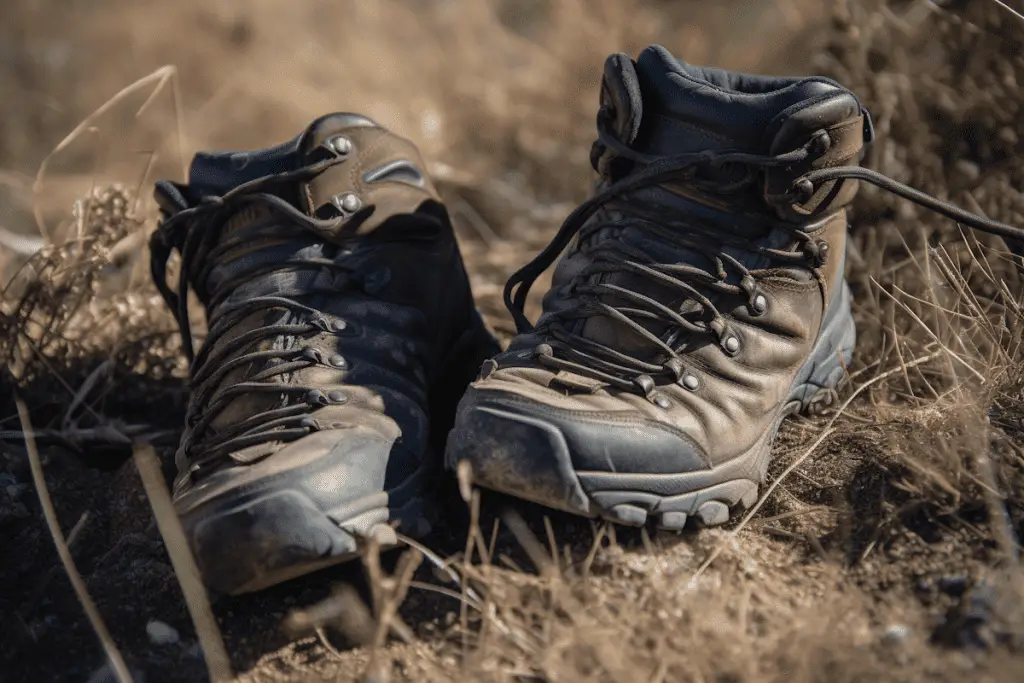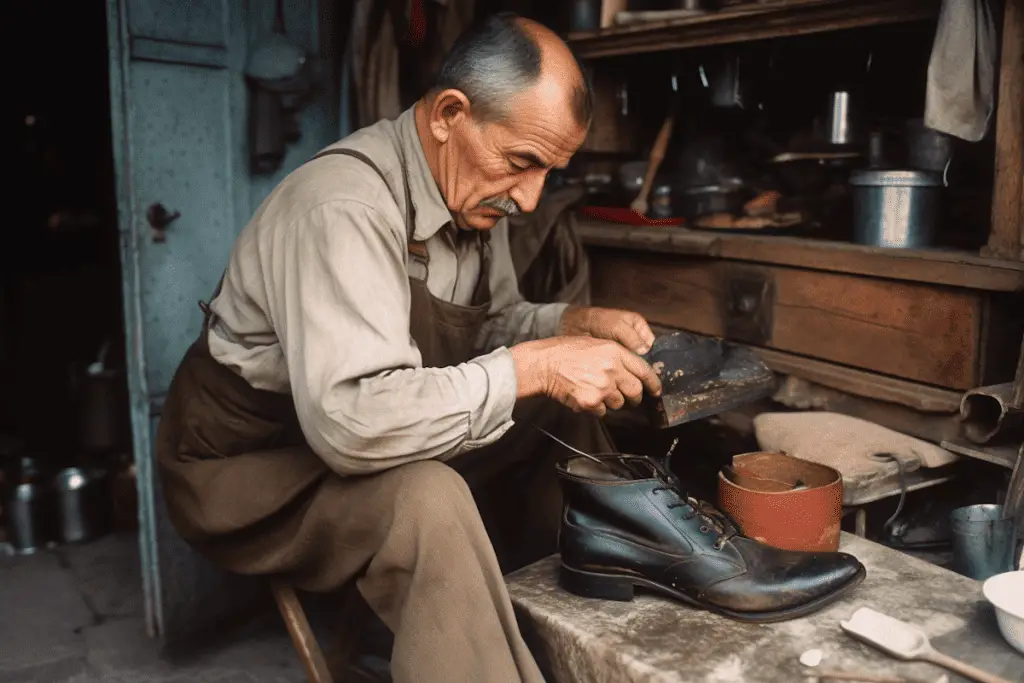I tend to fall in love with my hiking boots and I always want to make them last forever. You may feel the same way too. But how long do hiking boots last?
On average, hiking boots can last anywhere from 500 to 1000 miles, which translates to about 1-2 years of regular use. However, it’s important to inspect your boots regularly and replace them when they show signs of wear and tear.

Factors That Determine The Lifespan of Hiking Boots
The lifespan of a pair of hiking boots will vary dramatically based on a whole host of factors.
Here is a list of factors to consider:
- Terrain: The kind of ground you’re conquering makes a huge difference. Soft grassy trails are like a gentle spa day for your boots, whereas rocky or rough terrains are more like an intense boot camp workout. Your boots have to put up a harder fight against sharper rocks and uneven surfaces, which can speed up wear and tear.
- Frequency of Use: It’s simple math, really. The more often you hike, the more miles your boots clock in. If you’re a casual hiker who hits the trails every few months, your boots might last a solid number of years. But if you’re a daily trail conqueror, expect to replace your boots more frequently.
- Maintenance: Think of your boots as a beloved pet. They need regular care and attention, too. This includes cleaning them after each hike, letting them dry out properly, and storing them in a cool, dry place. Bonus points for using protective sprays or conditioners. A well-cared-for boot is a long-lasting boot.
- Boot Material: The type of material used in your boots plays a big role as well. Leather boots can be tougher than synthetic ones and may last longer, but they also require more maintenance to keep them in prime shape. So choose your material wisely depending on your hiking habits.
- Boot Construction: Not all boots are created equal. Some are stitched together, while others are glued. It might not surprise you that a boot with a welted or stitched sole generally stands up to the trails better than one with a glued sole.
- Weather Conditions: Extreme weather can also be a boot’s nemesis. Wet, cold conditions can especially damage your boots over time. On the other hand, consistently dry, moderate conditions are like a long, comfortable retirement for your boots.
- Weight Carried: The more weight you carry, the more strain on your boots. Heavy backpacks add extra pressure to the boot material and soles, potentially decreasing their lifespan. It’s something to consider when planning your hikes.
- Proper Fit: Ever tried running in shoes that are too big or too small? It’s not only uncomfortable but also increases wear and tear. Same goes for hiking boots. A proper fit can enhance durability by distributing pressure and strain evenly.
- Quality: You often get what you pay for. A higher upfront investment in a quality pair of boots might hurt the wallet initially, but it’ll likely outlast cheaper, lower-quality alternatives. The better the quality, the longer the lifespan.
Remember, these factors aren’t set in stone and will play out differently based on individual hiking habits and boot care practices.
Reading the Signs: How To Know When To Replace Your Hiking Boots?
Your hiking boots may not speak human, but they sure know how to communicate in their own way. They drop little hints when it’s time for some TLC or, in more serious cases, when it’s time to retire them. Knowing how to read these signs can save you a lot of trouble on the trail.
One of the first signs is often discomfort. If you start getting blisters where you didn’t before, or if your feet ache more than usual after hikes, it could be your boots crying out for help. Another common tale-tell sign is when the tread or soles of your boots start wearing thin. Reduced traction is not only a sign of an aging boot but also a safety risk on slippery or steep terrains.
Also, keep an eye out for any visible damage like cracks in the boot material, or separation of the upper part of the boot from the sole. If your boots are showcasing these signs, it might be time to consider a new pair. Remember, no matter how attached you’ve become to those old faithfuls, safety should always come first on the trail.
Freshening Up Your Sole Mate: Can You Resole Your Hiking Boots?
Your boots are doing well, except for their sole – can you resole your hiking boots?
No, in most cases you can’t just resole your hiking boots. This beind said, higher end hiking boots that were made using a stiched or welted construction can be resoled. Let’s get at it in more detail!
So your beloved hiking boots are starting to show their age, particularly in the sole department, and you’re wondering whether it’s possible to just replace the soles instead of bidding farewell to the whole pair. The answer is – maybe! The ability to resole your hiking boots largely depends on how they’re constructed.

If you’ve got a high-quality pair of boots with stitched or welted construction, then congratulations! You’re likely in the resoling zone. These boots are designed to be taken apart and put back together, giving them a chance at a second (or even third) life. Keep in mind, though, that the process should be done by a professional cobbler to ensure the structure of the boot isn’t compromised.
On the flip side, if your boots are of the lighter, glued-together variety, resoling becomes trickier and might not be possible. Additionally, if the upper part of your boots is badly worn or damaged, resoling may not be worth the cost, as it won’t fix those issues. The bottom line is, when in doubt, it’s always good to check with a professional. They can provide the best advice on whether your boots are up for a sole makeover.
Which Hiking Boots Offer Lifetime Warranties?
If you’ve ever bought a good pair of hiking socks, you know that some hiking gear does come with a lifetime warranty. So, which hiking boots offer lifetime warranties?
There aren’t any hiking boots that truly hold a lifetime warranty. If you want to keep the same pair of boots for the rest of your life, your best bet is to buy a pair that can have their soles replaced. These boots will have a higher upfront cost and a higher maintenance cost but they will save you money on replacement costs. You’ll also be able to take your beloved hiking boots with you to the grave.
